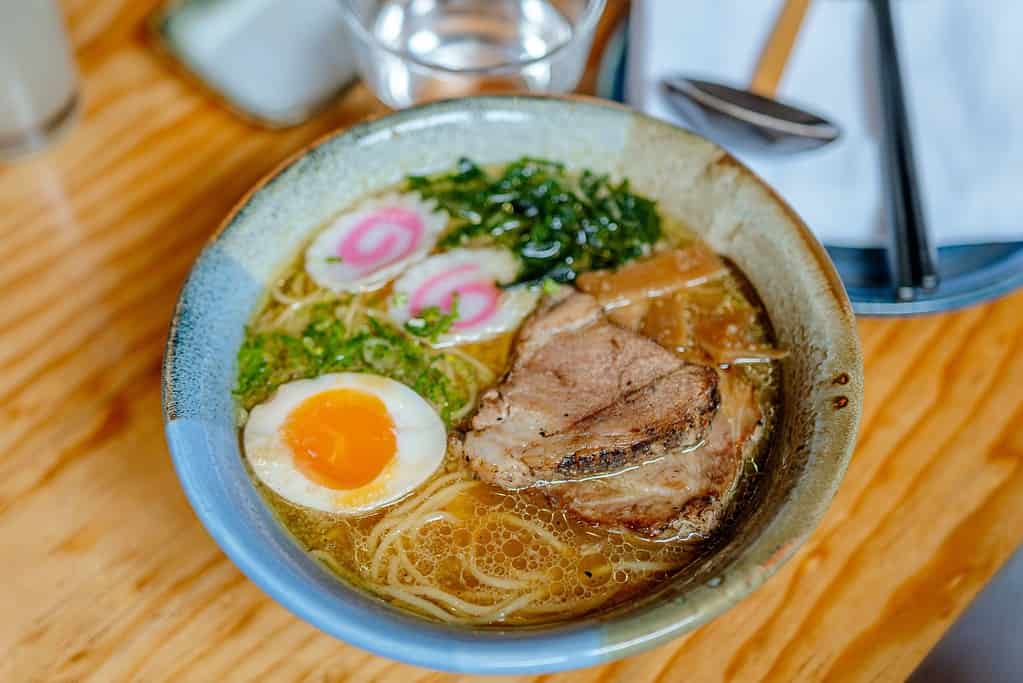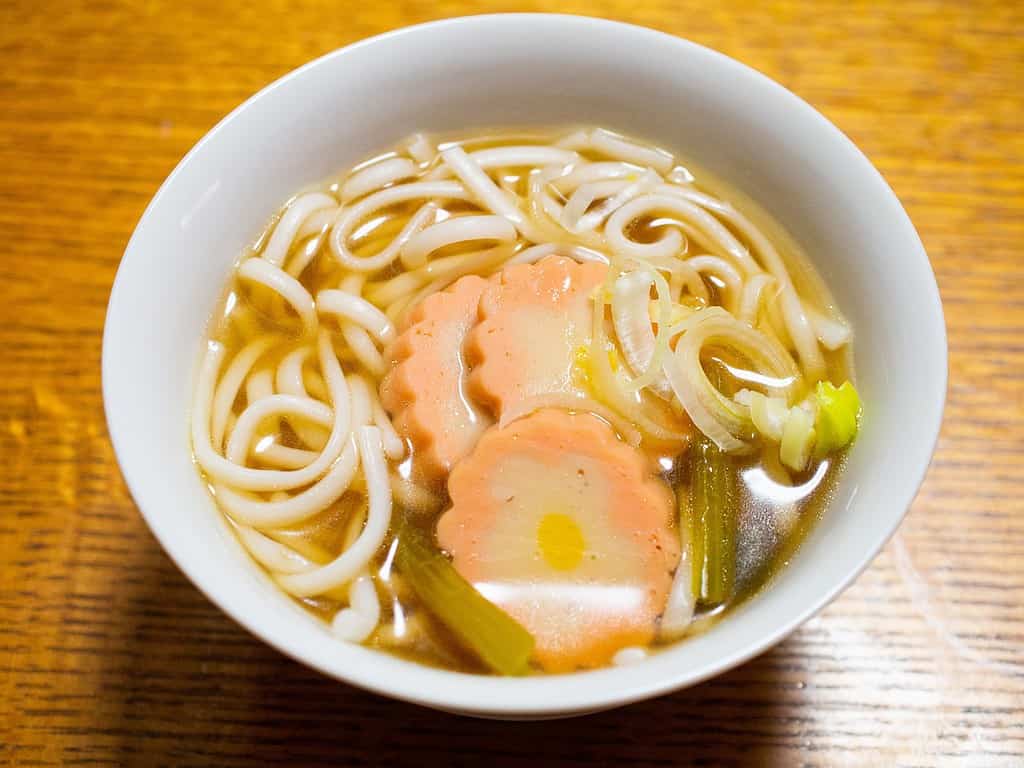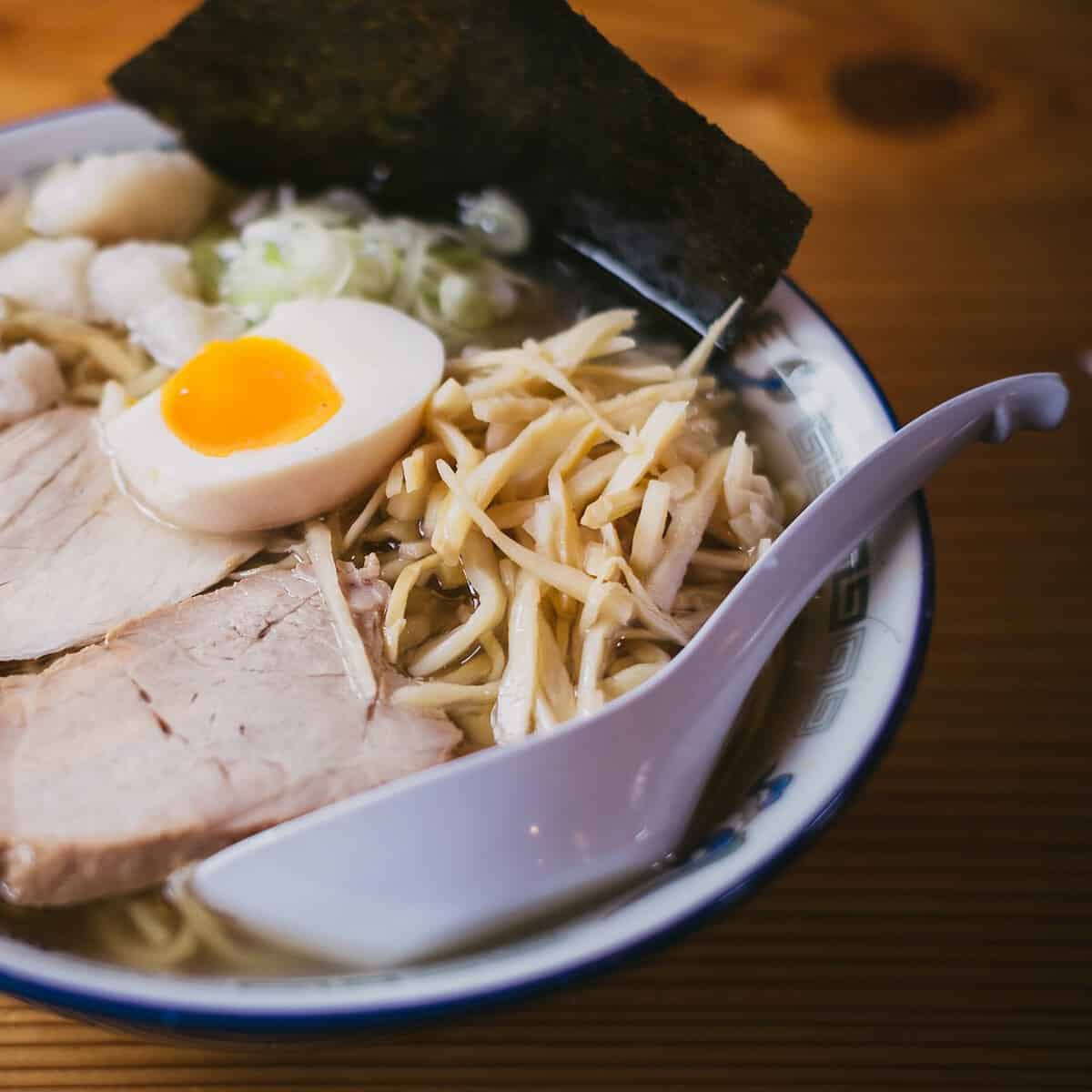Konnichiwa! When it comes to the world of Japanese cuisine, the culinary spotlight often shines on the tantalizing flavors of dishes like sushi, tempura, and yakitori. However, it would be remiss to overlook the remarkable diversity found in Japanese noodles. In this blog post, we will embark on a flavorful journey as we compare ramen and udon, two iconic noodle types. Join me as we explore the differences in ingredients, cooking techniques, flavor profiles, and the delightful accompaniments that make each dish unique.
The primary distinction between ramen and udon lies in the composition and texture of the noodles, as well as the richness and complexity of the accompanying broths. Ramen noodles are chewy, made with alkaline salts, and paired with flavorful broths, while udon noodles are thicker, softer, and often enjoyed with lighter, more delicate broths. Let’s dive a little deeper with each noodle type.
Ramen: A Symphony of Flavors
As an avid enthusiast of Japanese cuisine, the allure of ramen has always captivated me. With its rich broths and an array of toppings, ramen has become a worldwide sensation. Here’s what you need to know about ramen:
Ingredients:
- Wheat Flour: The main component that gives ramen noodles their distinct chewy texture and yellow hue.
- Water: Essential for forming the dough and cooking the noodles.
- Alkaline Salts (Kansui): Added to the dough, these salts contribute to the unique springiness and firmness of ramen noodles.
Process:
- Mixing and Kneading: Wheat flour, water, and alkaline salts are combined and kneaded to form a smooth dough.
- Resting: The dough is allowed to rest, which helps in gluten development and enhances the noodles’ texture.
- Rolling and Cutting: The rested dough is rolled out and cut into thin, long noodles of varying thickness, depending on the ramen style.
- Boiling: Ramen noodles are cooked in boiling water until they reach the desired texture, typically around 2-5 minutes.
Flavor Profiles:
- Broths: Ramen is known for its diverse broth varieties, such as tonkotsu (pork bone), shoyu (soy sauce), miso (fermented soybean paste), and shio (salt-based). Each broth offers a unique balance of umami, richness, and depth of flavor.
- Toppings: Ramen bowls often feature an assortment of toppings, including chashu (braised pork), menma (bamboo shoots), nori (seaweed), green onions, soft-boiled eggs, and more. These toppings add layers of texture and flavor to the dish.

Udon: A Simplicity of Comfort
While ramen dazzles with its complexity, udon noodles offer a comforting simplicity that has endeared them to many. Let’s explore the essence of udon:
Ingredients:
- Wheat Flour: The primary ingredient in udon noodles, resulting in their thick, chewy texture.
- Water: Crucial for forming the dough and cooking the noodles.
Process:
- Mixing and Kneading: Wheat flour and water are combined and kneaded to create a smooth dough.
- Resting: Allowing the dough to rest helps to relax the gluten and enhance the udon noodles’ texture.
- Rolling and Cutting: The rested dough is rolled out and cut into thick, cylindrical noodles.
- Boiling: Udon noodles are boiled until they achieve the desired softness, typically for around 8-10 minutes.
Flavor Profiles:
- Broths: Udon can be enjoyed with a variety of broths, including soy-based, dashi (Japanese stock) with mirin (sweet rice wine), or even simple kakejiru (a hot soy-based broth). These broths offer a lighter, more delicate flavor compared to the intense richness of ramen.
- Toppings: Common udon toppings include tempura, green onions, kamaboko (steamed fish cake), grated ginger, and sometimes even a sprinkle of sansho pepper for a touch of spice. These toppings complement the simplicity of udon, enhancing the overall dining experience.

Ramen vs. Udon: Contrasting Experiences
Ramen and udon offer distinct experiences that cater to different preferences:
Ramen:
- Flavor Explosion: Ramen delights with its bold, complex flavors derived from various broths and seasonings. Each spoonful is a burst of umami and richness.
- Noodle Variety: Ramen noodles come in different thicknesses and textures, allowing for a range of options to suit personal preferences.
- Versatile Toppings: Ramen bowls can be customized with an assortment of toppings, creating endless combinations to satisfy individual tastes.
Udon:
- Comfort in Simplicity: Udon embraces a simpler flavor profile, highlighting the natural taste of the noodles and the delicate broth. It offers a comforting and soul-warming experience.
- Chewy Goodness: Udon’s thick and chewy texture provides a satisfying bite that is both hearty and comforting.
- Embracing Minimalism: Udon’s elegance lies in its simplicity, often with fewer toppings, allowing the focus to be on the interplay between the noodles and the delicate broth.
Summary
In the ultimate showdown of ramen vs udon, it becomes evident that both noodle types possess their own unique charms. Ramen impresses with its bold flavors, diverse broths, and an array of toppings that create a symphony of taste. On the other hand, udon captivates with its comforting simplicity, offering a thick and chewy noodle experience that warms the heart.
Whether you find yourself craving the complexity of ramen or seeking the soothing embrace of udon, Japanese cuisine presents a world of culinary delights. The battle between ramen and udon is not one of superiority but rather an appreciation of the diversity and artistry found in Japanese noodles. So, the next time you embark on a culinary adventure, embrace the magic of ramen and udon, and savor the distinctive flavors and textures that make each dish a cherished experience.

